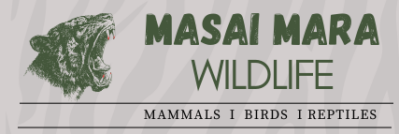- Common Names: Steinbuck, also known as Steenbok
- Scientific Name: Raphicerus campestris
- Swahili Name: Isha
- Maasai Name: Enkaakumuo
- Size:
- Head-Body Length: 105 cm (41 inches)
- Shoulder Height: 50 cm (20 inches)
- Gestation: 24–25 weeks
- IUCN Status: Least Concern, but local populations may be impacted by habitat loss and hunting.
Recognition and Appearance
The Steinbuck is a small, thin-legged antelope with a compact body and notably large ears. Males are easily distinguished by their short, straight horns, while females are hornless. This dainty species shares some similarities with the Oribi, another small antelope, but lacks the Oribi’s black sub-auricular (under the ear) glands and black markings on the tail. Instead, the Steinbuck has finely marked black lines inside its large, expressive ears. Its overall build gives the impression of agility and alertness.
Habits and Behavior
Though nocturnal, the Steinbuck is frequently active during the cooler hours of daylight. These solitary creatures, or sometimes pairs, tend to remain hidden in long grasses, making sightings a special treat. Unlike other antelope that form herds, Steinbuck usually stick to their own territories, communicating through scent trails laid by their pre-orbital glands (near the eyes) and leaving scent markings in regularly used dung piles.
The Steinbuck is generally shy and avoids direct confrontation, opting to hide or zigzag away when startled by predators, such as big cats or wild dogs. They rely heavily on their ability to blend into the environment rather than outrun their predators. Unlike some other small antelope, they are not known for stotting (a high jump used to signal fitness to predators).
Where to Find
Steinbucks prefer habitats with a mix of long and short grasses, typically found in savannas and grassy plains. The long grass offers the cover they need for safety, while the shorter grass areas provide feeding grounds. They are well-adapted to arid environments and can be found in semi-arid regions where their dietary flexibility supports their survival.
Diet
Steinbuck primarily subsist on a herbivorous diet, with a preference for flowers, fruits, and herbs. What makes them particularly unique is their ability to dig for roots and tubers, which allows them to survive in environments where surface vegetation is scarce, especially during dry seasons. This digging behavior makes them quite resourceful compared to other similar-sized antelope.
Conservation Status
Currently, the Steinbuck is classified as Least Concern by the IUCN, meaning that they are not under immediate threat on a global scale. However, local threats such as hunting for bushmeat, habitat degradation due to agricultural expansion, and fencing, particularly outside protected areas, can impact certain populations. Conservation efforts in areas like the Masai Mara help protect these graceful antelopes by preserving their natural habitat.
Interesting Facts
- Name Origins: The name “Steenbok” is derived from the Dutch word “steen,” meaning stone, perhaps referring to their preference for rocky, arid environments.
- Unique Behavior: Unlike many other small antelope species, Steinbuck do not often engage in stotting (high jumping), instead favoring zigzag escapes when threatened.
- Dietary Adaptations: Their ability to dig up roots and tubers allows them to survive in areas with minimal rainfall, making them highly adaptable to harsh climates.
Conservation and Challenges
In regions like the Masai Mara, Steinbuck benefit from protection within conservancies and national parks. Nevertheless, poaching and habitat fragmentation outside of these protected zones remain concerns. Sustainable land-use practices and increasing public awareness can help ensure the long-term survival of this charming species.
Spotting a Steinbuck on a safari is always a special encounter due to their shy and elusive nature. They are an excellent reminder of the diverse array of wildlife that makes the Masai Mara such a rich and unique ecosystem.
